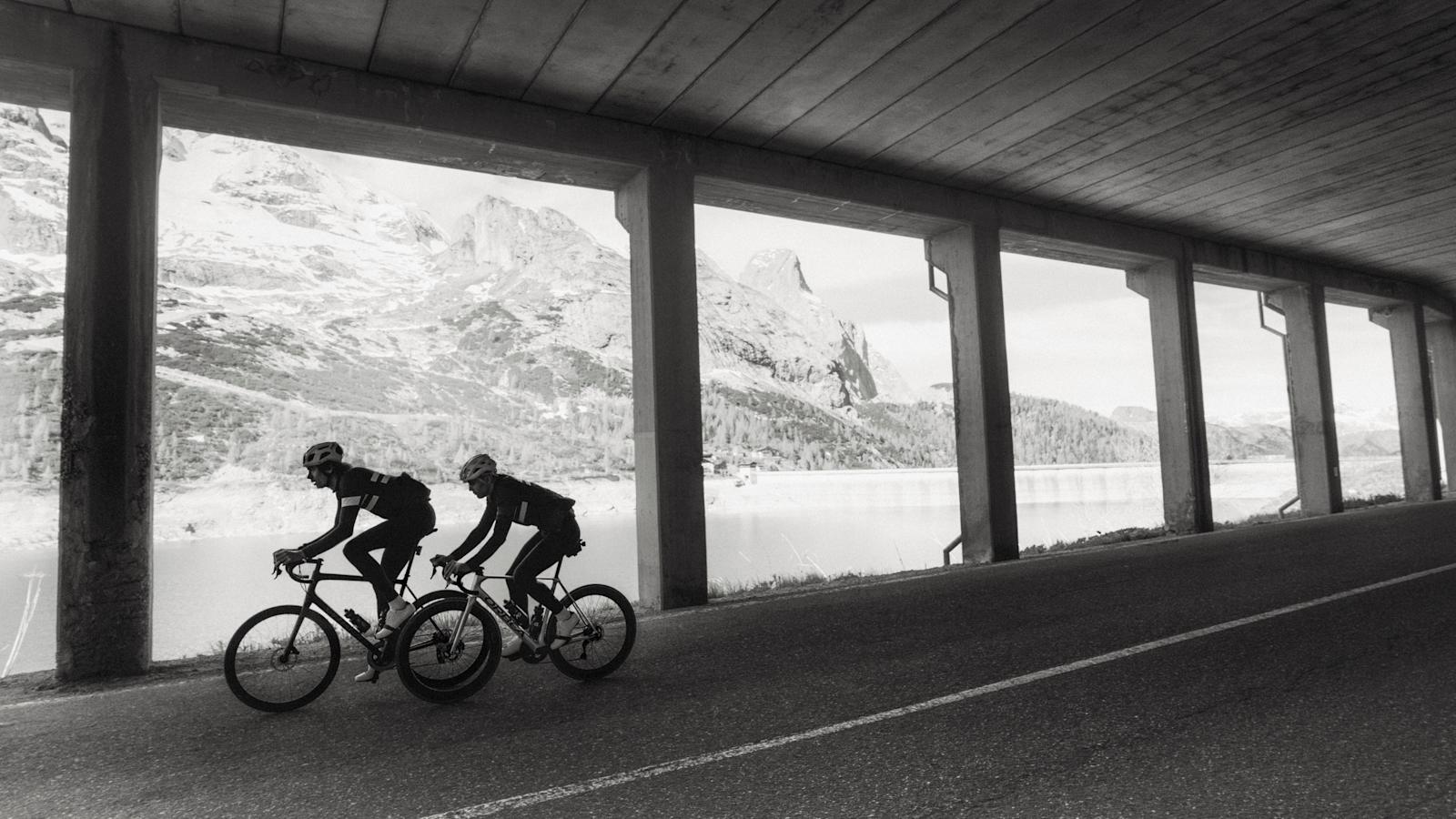The First King Of The Mountain
Riding in the light of legend in the Italian Dolomites.
WordsGeorge Tyson
PhotographyMark Mahaney
Since time immemorial, the folklore and fables of legends have helped make sense of our world. Today, our legends mostly rise not from mysticism or myth, but from the sporting arena. And cycling’s legends are many. From the celebrated to the contested, a great number made their name in the mountains – and few mountains compare in scale or reputation to those of the Italian Dolomites.
The Giro d’Italia first visited the Dolomites in 1937 – almost 30 years on from its inaugural edition in 1909. The two are now synonymous with one another, with this part of the Italian Alps providing the backdrop to some of the most demanding stages in the race’s history. Simply utter the words Gavia, Stelvio, Folzarego, or Giau, and any cycling fan is instantly transported to heroic scenes of raw determination on these great roads.
In that first visit here in 1937, the mountains classification was still relatively new to the Giro, and as the race wound its way over Passo Rolle and Passo di Costalunga, Gino Bartali would seal his second Maglia Rosa with a win on both stages. Bartali later became the most decorated king of the mountains in Giro history.
The Giro may have crowned its first true mountain king here, but the Dolomites and the aura that surrounds them are older than recorded history. Around 65 million years ago, the African and European tectonic plates began to collide, thrusting fossilized sea beds skywards. The rock types folded and faulted, and with the help of millions of years, wind, rain, and ice, the landscape of the Dolomites was slowly sculpted into the jagged ridges and valleys we see today.
The roads that ribbon through them might be the main draw to the region, but there’s another daily attraction that lives up to its origin story. It’s a phenomenon of light named Enrosadira, which finds its origin story in another legend – that of the first king of the mountain.
Enrosadira translates to ‘turning pink’ in the Dolomites' ancient Ladin language and, like many Ladin traditions, the tale has been passed down orally for centuries. According to legend, the pink-tinged rocks that glow every morning and evening are the result of a spell gone wrong. The area is said to have once been covered with red roses, hiding the enchanted treasures of King Laurin. But the king was betrayed by his beautiful gardens, with the brilliant pink hues of the roses having attracted his enemies, who would go on to capture and imprison him.
Infuriated, the king cast a spell that turned the gardens to stone, causing the roses to disappear during the day and at night. But King Laurin forgot about twilight. Today, it’s precisely these moments that ignite the peaks in a blaze of pink – a legend brought to life each day.
By 1968, the Giro’s love affair with the Dolomites was well and truly established, and the region was a regular fixture – and decider – of the race. That year’s edition saw the second appearance of Eddy Merckx, who, at 22 years old, had not yet attained the reputation that endures today. But as with the genesis of all great legends, his fate was far from sealed.
Stage 12 covered a brutal 213 mountainous kilometres, and would finish atop the Tre Cime di Lavaredo. The race rose up from Gorizia in heavy rain which quickly turned to snow. Set back by a mechanical and bike change, Merckx soon found himself chasing a breakaway group containing the race leaders – now more than 9 minutes up the road. Undeterred, the young rider fought hard, facing the bleak weather in short sleeves. Catching and passing the GC riders, Merckx crossed the line alone at the Rifugio Auronzo atop Tre Cime di Lavaredo – claiming the Maglia Rosa and keeping it all the way to Naples.
That day, Merckx didn’t just win the race. He won a new name for himself as a rider unlike any other. The performance stunned the cycling community, and even though his career was just getting started, many realised that a new era was beginning. A legend in the making. La Gazzetta wrote, “It was not a race, it was a pilgrimage of agony. Merckx passed through it like a god among ghosts.”
The slopes of these great peaks have been immortalised in both enduring feats of racing and timeless feats of natural architecture. Whether in myths of light or tales of cycling prowess, this mountainous arena will always be steeped in legend. And just like the eternal pink sunset, these roads will go on providing a setting for riders to write new legends long into the future.
A new season is here, and the first arrivals have landed in our Road collection. Discover dependable, best-selling styles for your longest rides, now available in fresh colours.
Read More Stories
Further tales of pioneering rides & product innovation
